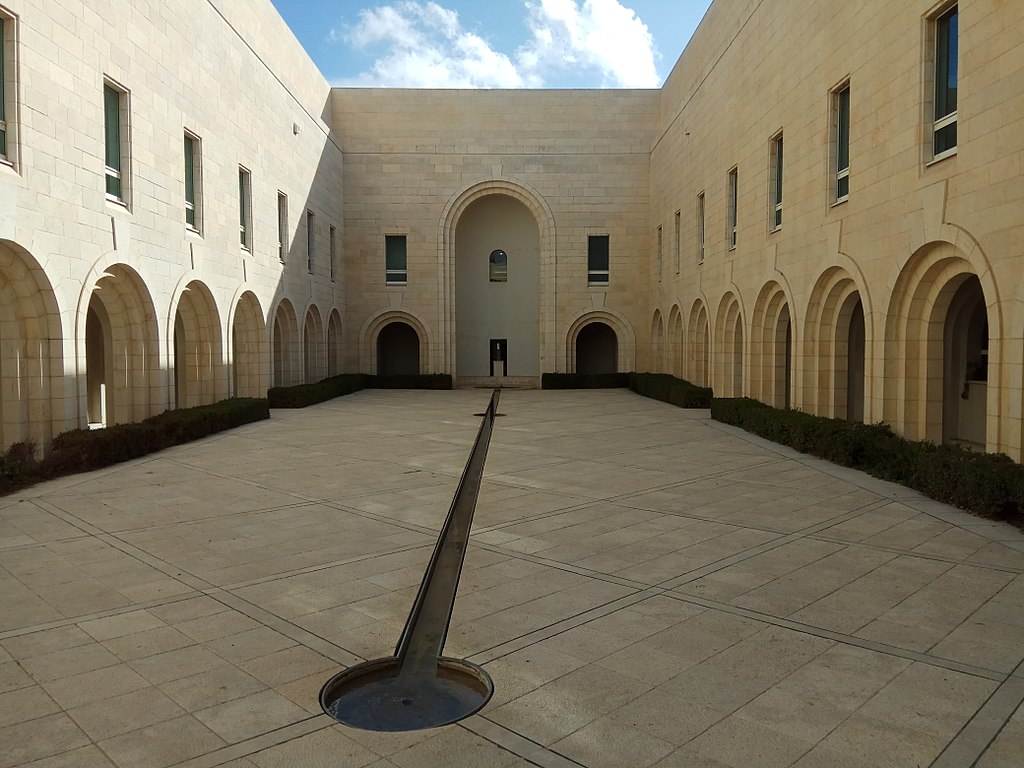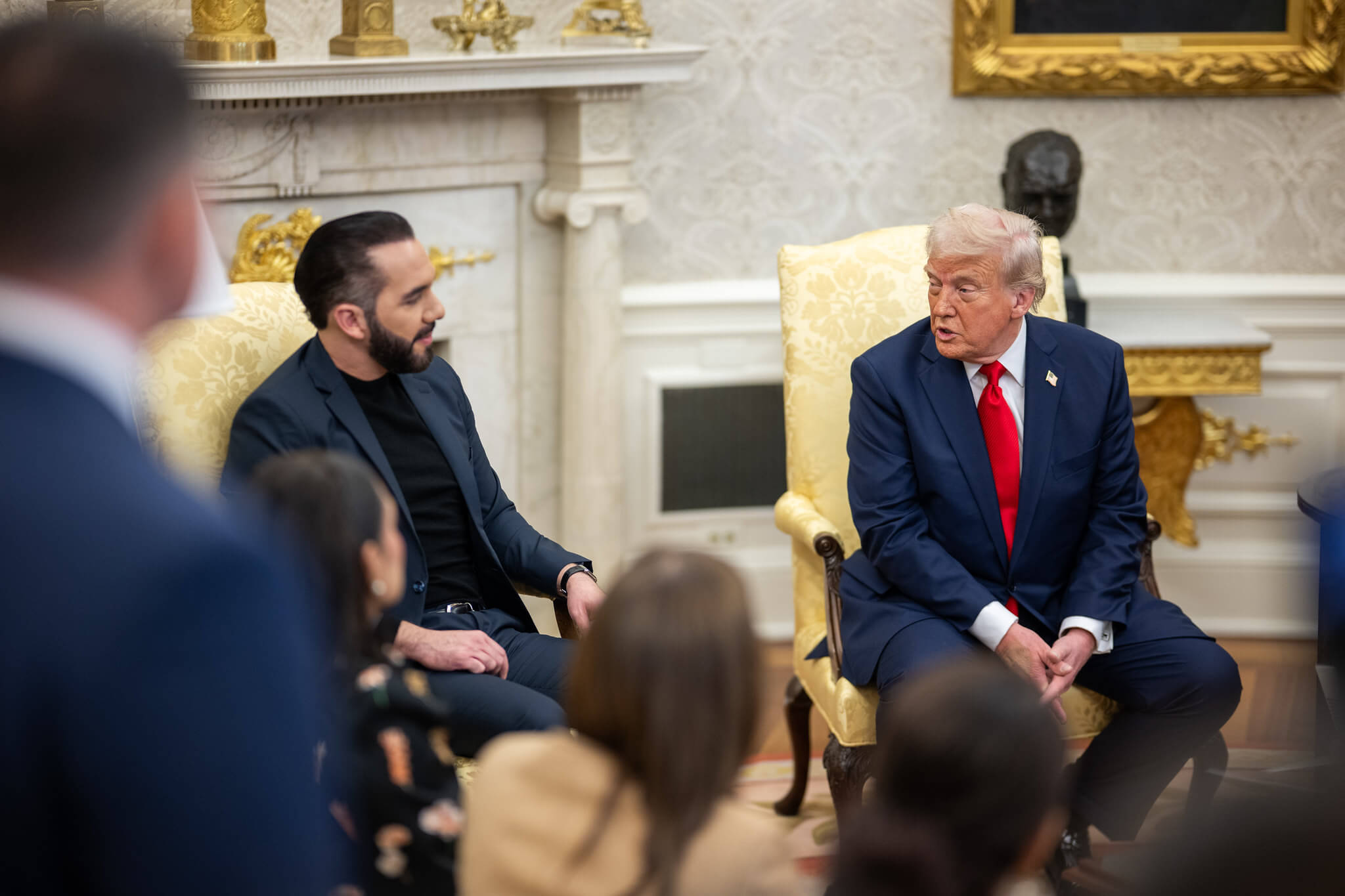Moving Toward Blanket Immunity: Israeli Supreme Court Blocks Gaza Tort Cases
A new Israeli Supreme Court judgment applies a 2012 amendment to civil tort immunity legislation to effectively block tort claims arising from incidents in Gaza.

Published by The Lawfare Institute
in Cooperation With

 On July 5, a panel of three justices on the Supreme Court of Israel rendered a long-awaited decision in a civil appeal brought against a 2018 district court judgment concerning a tort claim made by a Palestinian residing in Gaza (whose name is not provided in the decision). Anonymous v. Ministry of Defense and the Knesset was first brought to the Beer Sheva District Court in 2016, over a year after the claimant had been shot and injured by Israel Defense Forces (IDF) service members while being present in the Gaza Strip (about 500 meters from the border between Israel and Gaza). The Supreme Court’s judgment revolved almost exclusively around the scope of state immunity from tort claims arising from incidents in “enemy territory” afforded in a 2012 amendment to Israel’s tort laws, and its applicability to the situation in Gaza.
On July 5, a panel of three justices on the Supreme Court of Israel rendered a long-awaited decision in a civil appeal brought against a 2018 district court judgment concerning a tort claim made by a Palestinian residing in Gaza (whose name is not provided in the decision). Anonymous v. Ministry of Defense and the Knesset was first brought to the Beer Sheva District Court in 2016, over a year after the claimant had been shot and injured by Israel Defense Forces (IDF) service members while being present in the Gaza Strip (about 500 meters from the border between Israel and Gaza). The Supreme Court’s judgment revolved almost exclusively around the scope of state immunity from tort claims arising from incidents in “enemy territory” afforded in a 2012 amendment to Israel’s tort laws, and its applicability to the situation in Gaza.
Each judge on the panel took the view that the designation of Gaza as “enemy territory” and the ensuing blockage of most tort claims related to the conflict in Gaza is constitutional. Justice Noam Sohlberg, who wrote the leading opinion in the case, was open to going even further than his two colleagues and would have blocked almost all claims arising out of Gaza, whether connected to the conflict or not (see paragraph 140 of Sohlberg’s opinion).
Background
Legal debates concerning the scope of the IDF’s “act of war” immunity from tort claims have occupied the Israeli legal system since the 1990s, following the large number of intifada cases filed by Palestinian claimants against the State of Israel for harms inflicted on them by IDF counterinsurgency and counterterrorism measures. Much of that litigation revolved around the interpretation of Section 5 of the 1952 Civil Torts (State Responsibility) Law, which created immunity in torts for “acts of war.” In the principal judgment on this matter—the Benni Uda judgment (2002)—the Supreme Court distinguished between the IDF’s policing activities in occupied territories and its involvement in active hostilities. According to the court, the act of war immunity applies only to the latter category.
The Israeli legislature, facing a new wave of second intifada cases in the early 2000s, passed a number of amendments of the 1952 law to make it more difficult for Palestinians to bring tort cases in Israel. It shortened the period of limitations on torts cases against the IDF arising from the West Bank (Judea and Samaria) and the Gaza Strip to two years (instead of seven), and required claimants to notify military authorities of the underlying incident in which they were harmed within 60 days of occurrence (in order to enable the IDF to collect and preserve exculpatory evidence). Significant to the recent ruling, it also created new grounds for immunity, including immunity from tort claims brought by nationals of an “enemy state” (except if harmed in Israel while being lawfully present there), by active members of terror organizations (subject to a narrow exception for harms suffered in custody), and by residents of a designated “conflict zone” (subject to a number of exceptions). In 2006, the Supreme Court struck down certain provisions of a 2005 amendment that related to the new “conflict zone” exception, holding that they unnecessarily erased the distinction between policing acts and measures taken in the course of active hostilities, and resulted in an excessive limitation of the constitutional right to property and to other constitutional rights—including the right to life and bodily integrity—which the right of access to court protects (see the Adalah judgment).
The main legislative response to the 2006 judgment was a 2012 amendment to the 1952 law, which expanded the definition of “act of war” to encompass a broad swath of measures that are deemed of a belligerent nature when considered in light of all relevant circumstances. It also required trial courts to deal with the state’s act of war immunity defense, as a preliminary matter—so as to avoid some of the litigation burdens associated with litigating the merits. (In practice, trial courts in Israel often decided on the immunity claim only after the case was fully argued and defended; this practice has been criticized in another recent court judgment.)
Significant for the case at hand, the 2012 amendment also extended in a new section, 5ter(a)(1), the legal immunity from claims brought by “enemy state” nationals to claims brought by residents of an area designated by the Israeli government as “enemy territory.” This new ground for immunity was placed front and center in the Supreme Court’s new judgment, following the government’s designation of the Gaza Strip as “enemy territory” on Sept. 21, 2014.
Another relevant precedent for Anonymous is the Dirani judgment: a 2015 decision by an expanded panel of the Supreme Court to apply the common law doctrine on the inadmissibility of “enemy” claims to that of a senior Hezbollah operative who alleged he was tortured in Israeli detention. The court took the view that the claimant’s postrelease active membership in a terrorist organization placed him within the common law doctrine, despite there being no formal state of war between Israel and Lebanon, his state of nationality. This holding largely mirrors the rule now found in Section 5ter of the 1952 law (legislated in 2005, but not applicable to the Dirani case, which was originally filed in 2004).
The Judgment in Anonymous
The claim in Anonymous v. Ministry of Defense and the Knesset originated in November 2014, when the claimant was shot in the Gaza Strip, 500 meters from the Israel-Gaza border. The details of the incident are not provided in the judgment, but according to an Israeli media report, the claimant—who was 10 years old at the time of the incident—was moving in the direction of the border and entered the Israeli-declared no-go border perimeter. Following warning shots in the air and shots fired toward his lower body, he was shot in the neck and was severely wounded. An Israeli helicopter evacuated him to an Israeli hospital, where he received emergency life-saving treatment. The claimant submitted that he was a victim of Israeli state conduct, which fell within the legal definition of a number of torts, and that Israeli invocation of the “resident of enemy territory” immunity was invalid because of the unconstitutionality of the 2012 legal amendment. Israel maintained that the amended law and its application to torts occurring in the Gaza Strip served a “legitimate purpose” and was supported by a cost-benefit analysis, as it was a “non-excessive” reaction to the situation on the ground after 2007 (which was when Hamas took control of the Gaza Strip, less than two years after Israel’s withdrawal from the area).
Justice Sohlberg, writing the lead opinion, accepted two preliminary points: First, the court accepted that the constitutionality of the 2012 amendment could be challenged indirectly in a district court case dealing with a specific application of the immunity claim. This is currently the dominant position under Israeli law, notwithstanding an ongoing policy debate about supporting or opposing centralized, direct challenges of the constitutionality of legislation before the Supreme Court as opposed to decentralized, indirect challenges before trial and appellate courts.
Second, Sohlberg accepted that the case would proceed on the assumption that Israeli Basic Laws afford protection to the claimant. Sohlberg noted, in this regard, that though the power of the Knesset (Israel’s unicameral legislature and supreme governing body) to legislate—even extraterritorially—is always subject to constitutional review, the scope of constitutional protection afforded to individuals in occupied territories is more extensive than that afforded to individuals in foreign territories not effectively controlled by Israel, and that the protection afforded to individuals in such foreign territories in times of peace is more extensive than that afforded to them in situations of armed conflict. Put differently, he accepted the applicability in principle of constitutional review over laws applicable to the Gaza Strip, but suggested that the scope of review might be quite narrow. Still, as judicial authorities on the extraterritorial application of the Basic Laws to nonnationals were conflicting (in the Adalah case, for example, the court held that the Basic Laws protect the right of Palestinians harmed inside the occupied territories to access courts inside Israel), and since the matter was not properly argued before the court, Sohlberg agreed to assume for the sake of argument that an infringement of a constitutional right had occurred.
Sohlberg also considered the claimant’s argument that his rights under international law were violated as well, and came to the conclusion that the limits on the right of “enemy state” nationals to access Israeli courts were not incompatible with international standards given that comparable limits can be found in the practice of some other states. Sohlberg discussed the practices of the U.S., Germany, and Italy; cited the European Court of Human Rights (ECHR) Hanan case; and mentioned that literature on the issue is inconsistent. In any event, Sohlberg noted that international law norms cannot bring about the nullification of Knesset legislation; hence, the claimant’s rights under international law were ultimately irrelevant for constitutional review purposes.
After finding a putative infringement of the claimant’s constitutional rights of property, dignity of the person, and the right to access justice, Sohlberg proceeded to discuss the constitutional limitation clause (Article 8 of Basic Law: Human Dignity and Liberty), which allows for proportionate limitation of constitutional rights by law, if necessary for a legitimate purpose. Sohlberg identified two legitimate purposes for the legislation: (a) the unsuitability of tort law for armed conflict situations (since such situations involve special risks and evidentiary difficulties, and bearing in mind the limited feasibility of restitution on a massive scale); and (b) denying “enemy entities” of the financial and moral aid procured through litigation in the courts of their adversary. The key question, in this regard, was whether the 2012 amendment represents the least harmful means for obtaining the legislation’s legitimate purpose. Sohlberg answered this question in the affirmative.
First, he drew a distinction between the Adalah holding—which invited a case-by-case analysis of military operations in occupied territories—and the case at hand. According to the court’s jurisprudence, the Gaza Strip is no longer occupied territory. As a result, Sohlberg held that it can be assumed that no policing activity is currently being undertaken by the IDF there, and that the IDF’s interaction with the inhabitants of the Gaza strip is, almost by definition, a warlike activity. The circumstances are thus different from those that were present before the court in Adalah, which dealt also with West Bank cases—and which was, in any event, issued shortly after the Israeli disengagement from Gaza, before Hamas took over control over the area. Put differently, the court in Adalah did not confront events occurring in an area designated as “enemy territory.”
Second, he distinguished the Anonymous case from the Dirani case, which appeared to bar “enemy claims” only when the claimant had personal involvement in hostile activity. The Dirani rule extended the common law rule against the submission of claims by nationals of “enemy states” to members of terror organizations operating from foreign states, even when no war was declared on these states, which were not designated as “enemy states.” Sohlberg maintained that the Dirani case does not negate its continued applicability to all nationals of designated “enemy states” or “enemy territories” and maintained that the Gaza Strip, which is controlled by Hamas, is similar to an “enemy state.”
Third, he stipulated that in light of the high likelihood that tort claims arising from “enemy territory” would implicate the “act of war” immunity, and given the high costs of litigating such cases—even as a preliminary matter—a case-by-case construction of the immunity law would defeat legislative intent. This is especially the case given the practice of trial courts to review the reasonableness of IDF conduct, even when conducting preliminary review of immunity claims.
Finally, Sohlberg noted that the proportionality analysis is informed by the fact that the 2012 amendment does not prevent legal claims under legal regimes other than tort law (namely, administrative law and criminal law) or against entities other than the State of Israel, and contains exceptions for individuals lawfully present in Israel or in Israeli custody.
The opinions of Justice Ofer Grosskopf and Justice Neal Hendel are considerably shorter than that of Justice Sohlberg. They generally agree with his analysis but narrow their agreement only to situations involving a tight connection to the conflict situation. They maintain that in other cases, where only one of the two rationales for the 2012 amendment is available—for example, when a Gazan is bringing a tort claim for harm caused to his property inside Israel—there would be serious concerns about the proportionality of the immunity law. They maintain that the question does not arise in the present case, however, since the incident was closely related to the conflict situation: a military act in proximity to the border in an “enemy”-controlled territory.
Blanket Immunity
The upshot of Sohlberg’s opinion is the near-complete blocking of Gaza’s residents from bringing tort cases before Israeli courts. This is a significant change compared to the court’s position in Benni Uda and Adalah, in which then-Supreme Court President Aharon Barak (who wrote the leading decision in both cases) insisted on a case-by-case review of the features of the tort claims brought, so as to ascertain whether the application of the “act of war” immunity is justified by factors such as special risk, high stakes, chaotic conditions, limited access to the scene, and the like. This approach was always viewed with hostility by the Ministry of Justice lawyers, since the case-by-case review implied that all cases needed to be thoroughly investigated and defended, generating considerable burdens and costs for state prosecutors. By painting doomsday predictions about the flood of Palestinian cases, the Ministry of Justice was able to convince Parliament to limit, time and again, access to the court. It did so by creating new bans on claims brought by residents of “conflict areas” and “enemy territory” and by active terrorists—and by creating various procedural hurdles for litigants to cross. The Supreme Court struck down in Adalah the “conflict area” immunity regime but accepted in Anonymous and Dirani the other two regimes. In both latter cases, however, exceptions remain. In Anonymous, the majority retained a “close relationship to the conflict” requirement, and in Dirani, the court limited its holdings to postrelease terrorists who resumed their active membership in a terrorist organization.
The discussion of the facts in Anonymous do not bode well for those claimants seeking to rely on the exception to the new immunity regime. According to media reports, the claimant was severely injured in an isolated incident occurring months after the last major conflagration in Gaza (Operation Protective Edge, which ended on Aug. 26, 2014), and it is not clear from the record whether he was approaching the border with an intent to engage in a hostile act. In fact, such intent or capacity to harm is unlikely given the claimant’s young age at the time of the incident. That he was evacuated from the place of the incident by an Israeli helicopter also casts doubt on whether the conditions underlying the “act of war” immunity, including access to evidence, were met in the case. The application of law to the facts strongly suggests that the approach adopted by Sohlberg (and by the district court), that tort claims by residents of the Gaza Strip should be blocked due to the state of hostility between Israel and the area, effectively carried the day.
The outcome of the case leaves individuals harmed outside active theaters of hostilities bereft of a tort remedy, even when their injury was clearly unjustified and/or unlawful, and even when its connection to the armed conflict is rather tenuous. It is against this harsh outcome that one has to understand the district court judge’s call to create a system of administrative payments for harms caused in breach of international humanitarian law (IHL) and the majority’s attempt to carve out a “close relationship to the conflict” exception. Sohlberg notably expressed doubt as to whether judges should be calling for setting up such a system of administrative payments.
From an international law perspective, the outcome of the Anonymous case is highly problematic. It leaves victims of a potential violation of both international human rights law (IHRL)—for instance, victims directly impacted by IDF cross-border fire—and IHL, which protects civilians like the claimant, without effective remedy. The court’s reference to the duty of each party to the conflict to address harms caused to their own residents represents a largely outdated version of international law, and certainly an ineffective one in the context of the situation in Gaza. While it is true that international law practice does not clearly support the extension of tort law to acts of war, we are of the view that states that do not allow for tort claims must establish alternative mechanisms, whether under administrative law or through ex gratia payments to provide victims with effective remedies. It is regrettable that in a time when doubts are expressed about the effectiveness of Israel’s criminal law response to incidents in Gaza, the Supreme Court has accepted the constitutionality of legislation that mostly blocks the one remaining legal avenue that had been open for injured Palestinians.
Legal Disengagement From Gaza
One notable aspect of the Anonymous judgment is the distinction drawn by Justice Sohlberg between the legislative amendment (“conflict area” immunity) that was struck down by the Supreme Court in the Adalah case and the legislative amendment (“enemy territory” immunity). He did so by noting the difference in the factual situation between the West Bank and Gaza Strip. In the West Bank, Israel routinely exercises police power and has legal responsibility for Palestinians as protected persons. By contrast, Israel now has no comparable legal obligation for residents of the Gaza Strip. At the heart of this legal distinction is the court’s position that following Israel’s withdrawal from Gaza in 2005, the territory is no longer subject to the laws of belligerent occupation. Sohlberg did acknowledge the existence of contrary views in the academic literature that advocate for a functional application of the laws of belligerent occupation to situations of “remote control,” but he described these positions as reflecting lex ferenda (what future law should be) and not lex lata (the law as it exists).
We are of the view that the legal position espoused by the court is plausible in the sense that the laws of belligerent occupation are not applicable in the absence of Israeli boots on the ground in Gaza Strip and in light of the effective control exercised by Hamas over the same territory. This, however, does not mean that Israel has no legal obligations vis-a-vis residents of the Gaza Strip, as the Israeli Supreme Court itself acknowledged in the Bassiouni judgment (dealing with the duty to continue to provide electricity to Gaza residents). In particular, there remains the question of extraterritorial human rights obligations—especially in connection with the conditions identified by the Human Rights Committee in General Comment No. 36—with respect to measures involving direct and reasonably foreseeable impact, such as cross-border shooting or disconnecting the flow of electricity to Gaza hospitals. Such obligations apply in parallel with IHL norms. There may be circumstances in which the application of IHRL norms might be difficult, such as in situations of active hostilities like those referred to in the Georgia v. Russia (II) judgment. (Note, however, that we do not subscribe to the court’s conclusions there regarding lack of applicability of the ECHR.)
However, in other situations, there is no particular difficulty in applying IHRL. In the case at hand, for example, it is not clear which specific impediments prevented Israel from investigating the incident discussed in Anonymous, which concerned a deliberate shooting from the Israeli side of the border of a Palestinian civilian located on the other side, and the subsequent treatment of the victim in an Israeli hospital.
It seemed that the court was willing, in what we consider to be a retrograde manner, to block access to the court for cases involving only very limited warlike factors, pursuant to a legal provision that aims to block all “enemy” claims. As Justices Grosskopf and Hendel noted, however, the policy considerations in favor of preventing claims that may benefit the “enemy” side are not sufficiently strong in and of themselves to justify the removal of constitutional protection from individuals. Unfortunately, Grosskopf and Hendel did not complete the analysis by seriously considering whether the specific considerations that could justify blocking tort claims arising out of active hostilities—that is, the Benni Uda criteria—were fulfilled.
At the end of the day, the court’s judgment in Anonymous reflects Israel’s vague policy vis-a-vis the Gaza Strip: Israel considers Hamas to be responsible for everything that happens in the Gaza Strip, although it does not recognize Hamas as a legitimate government. Nor does Israel have a clear position on the status of the Gaza Strip, except that it does not consider it to be occupied territory. Israel also considers itself to be locked in a permanent armed conflict with Hamas, although the actual levels of violence greatly fluctuate. As long as the Gaza Strip remains in this legal and political twilight situation, anomalies and protection gaps such as those facilitated by the court’s judgment in Anonymous will persist.
Anonymous represents a move by the Israeli legal system toward blanket immunity for Palestinian tort claims emanating from the Gaza Strip. This is a regrettable outcome that stands in tension with the court’s tacit acceptance that Palestinians residing in Gaza may claim certain constitutional rights. The outcome of the case—a loose application of the “enemy territory” immunity claim—is also at odds and with the majority’s insistence on there being a close relationship between the incident at hand and the broader conflict. An outcome more consistent with IHRL and the tradition of the Supreme Court itself in Benni Uda and Adalah would have been to limit, through the exercise of constitutional review, the 2012 amendment to acts of war featuring high levels of risk, military mobilization, or uncertainty found typically in theaters of hostilities; to develop alternative remedies for compensating victims of violation of Israeli law or international law; or to insist on a robust application of the “close relationship to the conflict” test.






